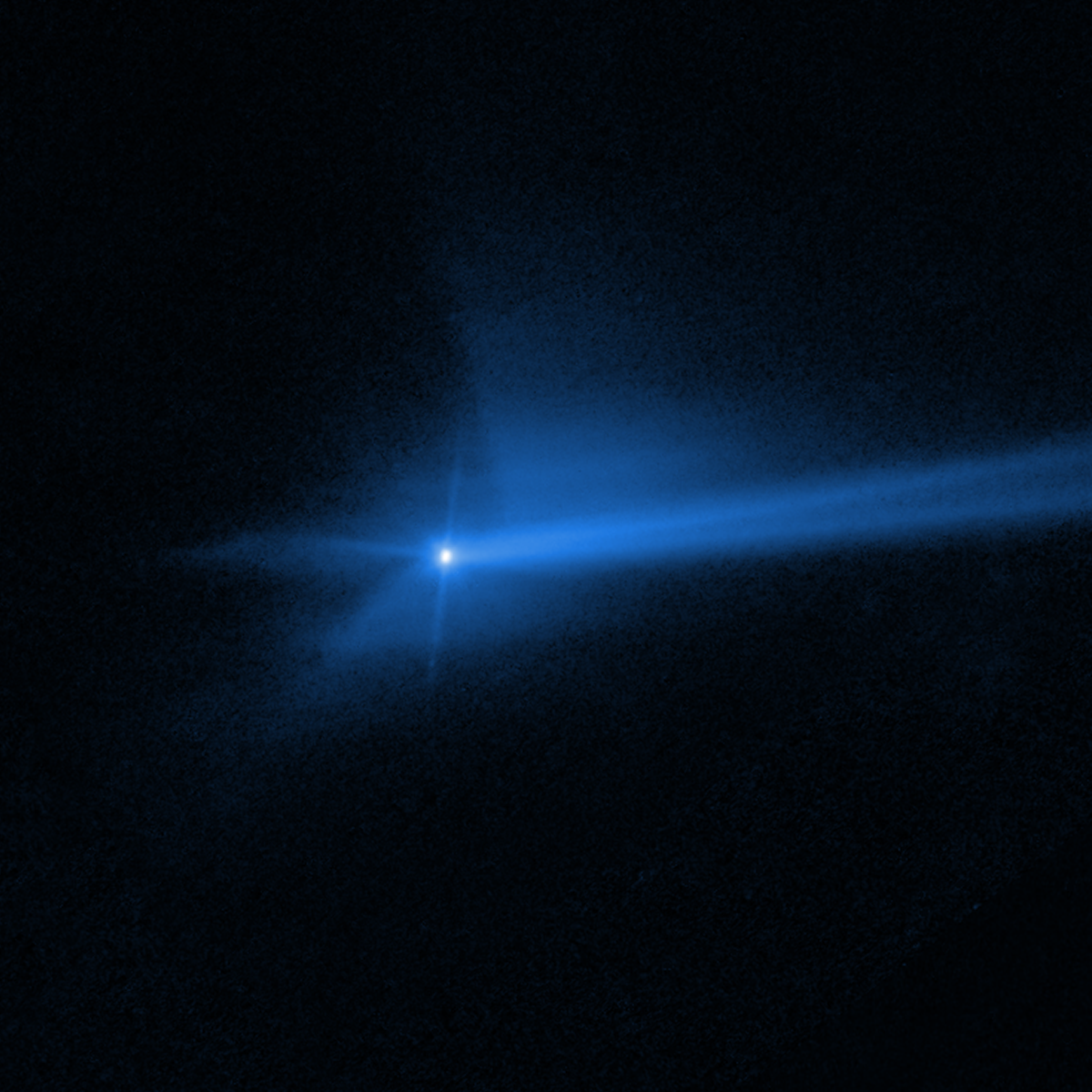
Summary
Never-Before-Seen Spacecraft Collision Yields Unexpected Surprises
In 2022 NASA embarked on a bold experiment to see if they could change an asteroid’s velocity by smacking it with a ballistic probe – kind of like hitting it with a hammer. This experiment was to test a potential technique to someday deflect an asteroid on a collision course to Earth. Perhaps, for the first time in the history of the universe, an intelligent planetary species sought ways to avoid its own potential extinction by threats from outer space (something the dinosaurs, who were wiped out 65 million years ago by a rogue asteroid, never evolved to accomplish). Called DART (Double Asteroid Redirection Test), the target was a binary asteroid Didymos/Dimorphos. On September 26, 2022, Dimorphos was hit with the DART spacecraft, which was half the weight of a small car.
Hubble had a ringside seat to the demolition derby. It fired off a series of snapshots over several days capturing the outflow of tons of dusty debris from the 13,000-miles-per-hour impact. Astronomers didn’t know what to expect. They were surprised, delighted, and somewhat mystified by the results. The dust blew off the asteroid into a cone shape, got twisted-up along the asteroid’s orbit about its companion, and was then blown into a comet-like tail. Knowing how to steer a rogue asteroid away from a catastrophic collision with Earth might save humanity someday.

